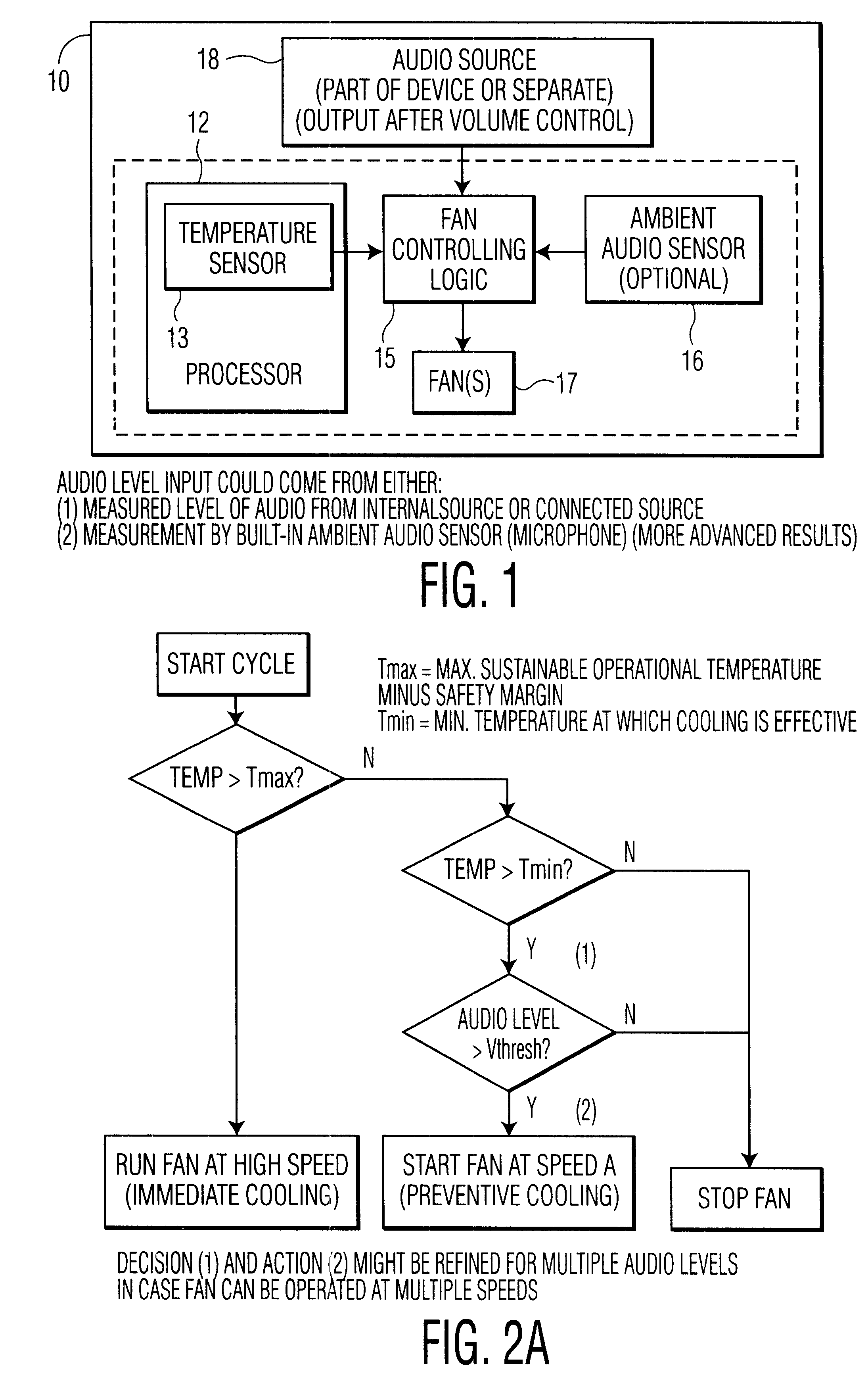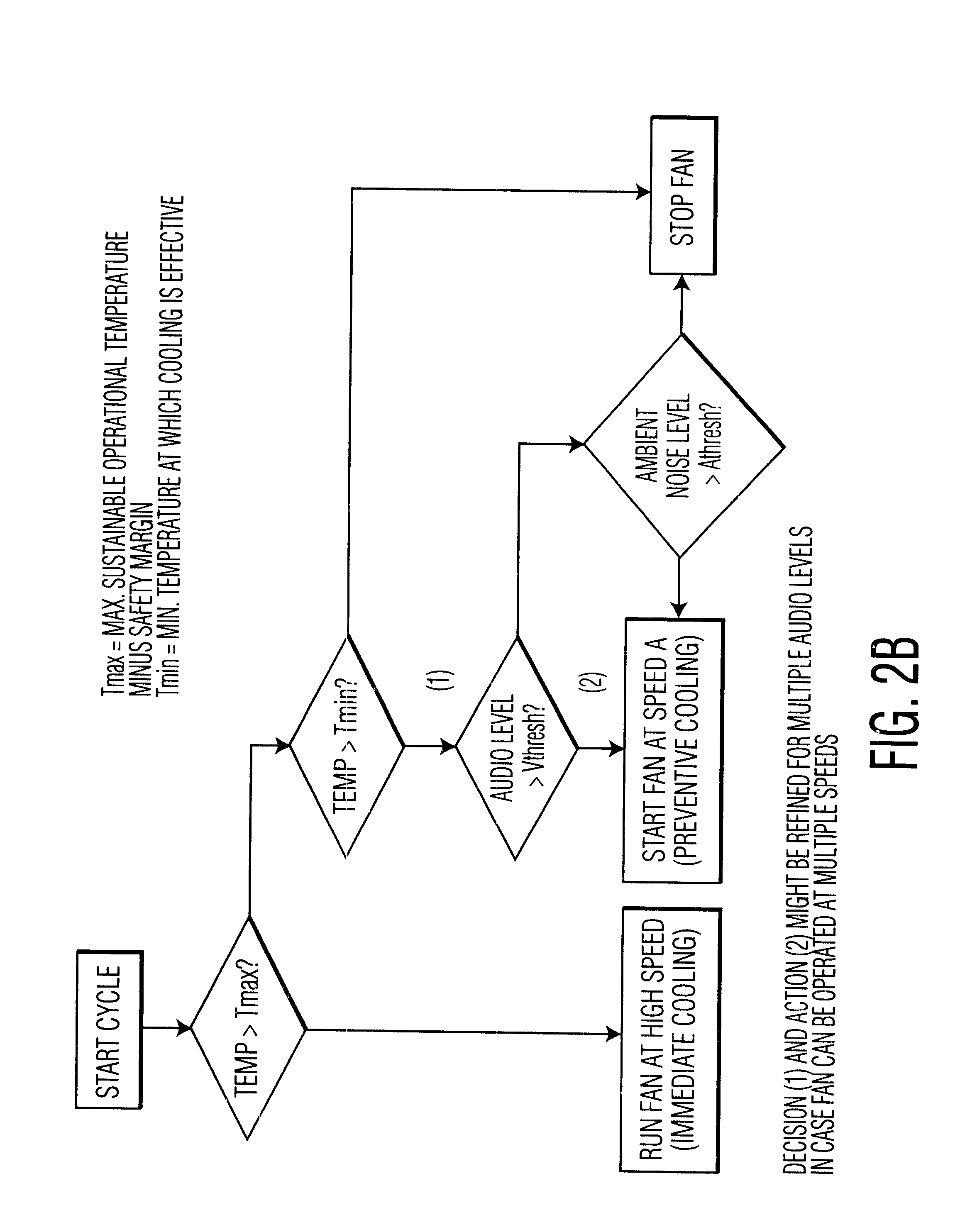Cooling fan in sync with audio output level
a cooling fan and audio output technology, applied in the direction of domestic cooling apparatus, electric apparatus casings/cabinets/drawers, instruments, etc., can solve the problems of fan noise that interferes with the playing of music, certain circuits requiring cooling however, and tends to operate in bursts, and can be quite annoying
- Summary
- Abstract
- Description
- Claims
- Application Information
AI Technical Summary
Problems solved by technology
Method used
Image
Examples
first embodiment
A temperature sensor is described in U.S. Pat. No. 5,870,614 incorporated herein by reference. FIG. 1 shows a block diagram in accordance with the invention. An electronic device such as a PC or home audio equipment 10 is provided with a processor 12, having a temperature sensor 13, fan controlling logic 15, a fan 17 and an audio source 18 (internal or external). The fan is controlled by logic circuitry 15 which receives inputs from the temperature sensor 13 and the audio source 18. Logic circuitry 15 can also be replaced by a microcontroller, microprocessor or other processor or software running such processor. FIG. 2A shows a flow chart of the operation of the embodiment in FIG. 1.
Temperature sensor 13 can be integrated in a semiconductor substrate or for example a processor 12 or located somewhere else within the electronic circuit. For ease of explanation it will be assumed that the temperature sensor 13 is located within the substrate. Temperature sensor 13 provides a signal in...
third embodiment
FIG. 3 shows a graph of the invention which also controls the fan speed. In this embodiment the fan speed is variably controlled based on the audio output level and the temperature of the semiconductor or device. (This graph also applies to the embodiment which controls the fan speed based on temperature and ambient noise level only.) In this case if the temperature of the semiconductor or device is at Tmin or less, the fan is always OFF. If the temperature of the semiconductor or device is less than Tmax then the audio source signal level is monitored. If the audio signal level is above Amax then the fan is on high speed and / or ambient noise level. If the temperature level is between Tmed and Tmax and the audio signal is less than Ahigh and greater than Vmed then the fan is run at medium speed. If the temperature level is less than Tmed and greater than Tmin and the audio output level is below Vmed then the fan is run on low speed. Obviously these levels can be partitioned for even...
PUM
 Login to View More
Login to View More Abstract
Description
Claims
Application Information
 Login to View More
Login to View More - R&D
- Intellectual Property
- Life Sciences
- Materials
- Tech Scout
- Unparalleled Data Quality
- Higher Quality Content
- 60% Fewer Hallucinations
Browse by: Latest US Patents, China's latest patents, Technical Efficacy Thesaurus, Application Domain, Technology Topic, Popular Technical Reports.
© 2025 PatSnap. All rights reserved.Legal|Privacy policy|Modern Slavery Act Transparency Statement|Sitemap|About US| Contact US: help@patsnap.com



